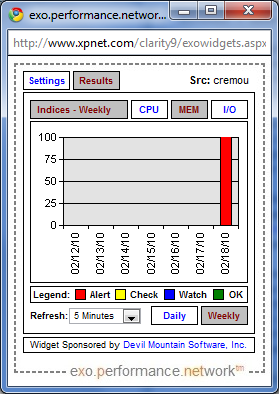 With the porker known as Windows Vista now behind us, we thought accusations of obscene system resource hogging were well behind us, too. Not so. After “Craig Barth” from Devil Mountain Software reported last week that Windows 7 was gobbling up almost all system RAM on 85 percent of installed computers, new reports have identified Mr Barth as a fraud and explained the alleged memory claims.
With the porker known as Windows Vista now behind us, we thought accusations of obscene system resource hogging were well behind us, too. Not so. After “Craig Barth” from Devil Mountain Software reported last week that Windows 7 was gobbling up almost all system RAM on 85 percent of installed computers, new reports have identified Mr Barth as a fraud and explained the alleged memory claims.
After digging into Craig Barth’s history and mysterious tendency to comment only to ComputerWorld, ZDNet Editor in Chief Larry Dignan discovered that it was merely a pseudonym used by InfoWorld reporter Randall C. Kennedy to distance his software company, Devil Mountain Software, from his writing persona.
Kennedy has since fessed up. “The individual Craig Barth doesn’t exist,” Randall wrote in an e-mail to ComputerWorld contributor Greg Keizer, who he had tricked into believing in Craig Barth for over two years. “It’s a pseudonym I created a decade ago while writing news copy for Windows NT Magazine. I resurrected it a few years back in an effort to separate my sometimes controversial editorial contributions to InfoWorld from the hard research content I was developing as part of Devil Mountain Software.”
InfoWorld editor Eric Knorr has since axed Randall and posted a public apology to InfoWorld readers.
As for those memory allegations, Ars Technica’s Peter Bright took “Barth” to task by researching the claim using the same Devil Mountain software he allegedly made his observations with. According to Bright, Devil Mountain’s tools do report significant memory usage from Windows 7, but only because of a feature called SuperFetch technology, which precaches commonly used assets in surplus memory to access them more quickly when called upon. Although the memory is technically in use, SuperFetch earmarks it to be overwritten instantly when needed, making it no less useful than free memory in real-world use.
Kennedy has rebutted Ars Technica in a blog post claiming that Devil Mountain’s performance monitoring utilities do accurate reflect the amount of RAM available. “Anyone with any real experience monitoring Windows performance in the real world – and no, playing with Task Manager or Resource Monitor in your mom’s basement doesn’t qualify – knows we’re right,” he claims.
Editors' Recommendations
- How to make Windows look like Windows 7
- This popular photo-editing app will no longer work on Windows 7 and Windows 8.1
- Windows 7 has been dead for a year, but 100 million PCs still use it
- Here’s why the death of Windows 7 is breathing new life into PCs
- How Windows 7 saved Microsoft from driving over a cliff — twice
